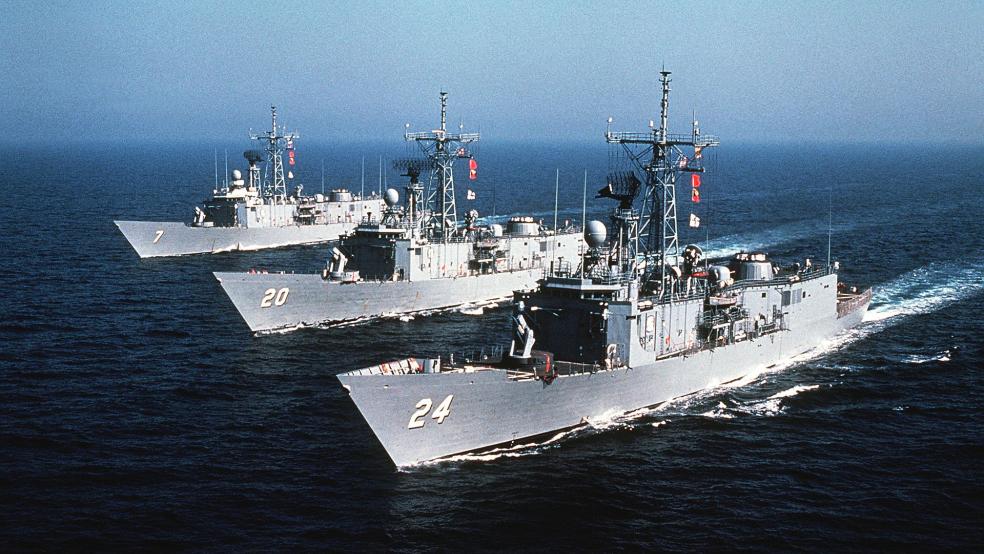The U.S. Navy plans to increase the size of its fleet to 355 ships, up from the current level of 283 ships, and President Trump has enthusiastically supported the buildup, recently telling graduates of the U.S. Naval Academy that “very soon you are going to get to 355 beautiful ships.”
However, as numerous experts have pointed out, the 355-ship Navy is a long-term project, one that will likely take many years to achieve. "There is no ‘very soon’ about growing the size of the Navy," Todd Harrison, a defense analyst with the Center for Strategic and International Studies, told PolitiFact.
The Congressional Budget Office estimated in April 2017 that it would take at least 18 years to hit the 355-ship target, and that’s assuming there’s an enormous and sustained increase in funding. The Pentagon would need to spend $102 billion (in 2017 dollars) per year through 2047 to build and operate the fleet. Ship construction alone would cost more than $26 billion per year — which, the CBO points out, “is more than 60 percent above the average amount the Congress has appropriated for that purpose over the past 30 years.”
Another CBO report, released last month, pointed out that there’s more than one way to increase the size of the fleet: In addition to building more ships, the Navy can delay the retirement of existing ships and/or reactivate ships that have been decommissioned. The CBO examined the third option to see if it made financial sense to bring retired ships back into service. Here are some of the CBO’s conclusions, based on its analysis of ship reactivations since World War II:
- reactivating a decommissioned ship typically costs at least 10 percent of the price of building a new one, but potentially as much as 45 percent if the combat systems need to be upgraded
- reactivated combat ships are less capable and have much shorter service lives — five to seven years, compared to 25 to 40 years for newly built ships
- cargo ships are cheaper and faster to refurbish than combat ships, though much depends on how well a given ship was maintained in storage
- renovation costs have increased over time, due to the sophistication of modern combat systems.
Some naval analysts are pushing for the refurbishment of the 22 Oliver Hazard Perry-class frigates currently in mothballs, 10 of which have been maintained at the highest level for potential foreign military sales. The Navy estimates it would cost about $200 million to renovate each 1980s-era ship, roughly 25 percent of the replacement cost. However, that estimate does not include the cost of fully upgrading the combat systems, and the renovated ships would likely be limited to drug interdiction duties or Arctic patrols without more extensive work. On the other hand, the renovations would take only nine months, far less than the five years it takes to build a modern combat ship from scratch, and the work could be done in shipyards around the country, bringing more ships online at once.
The CBO concluded that the “cost and benefits of reactivation would depend on the role the ships would play in the Navy’s long-term plans.” Bringing the ships back to full combat capabilities would require more time and expense, but if the Navy is interested in a quick increase in size with ships of limited capacity and lifespan, refurbishment could be a viable option.





